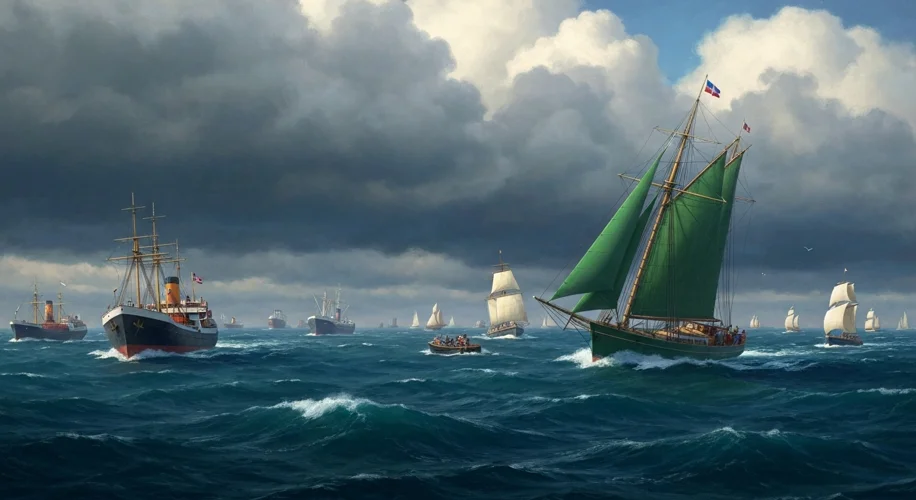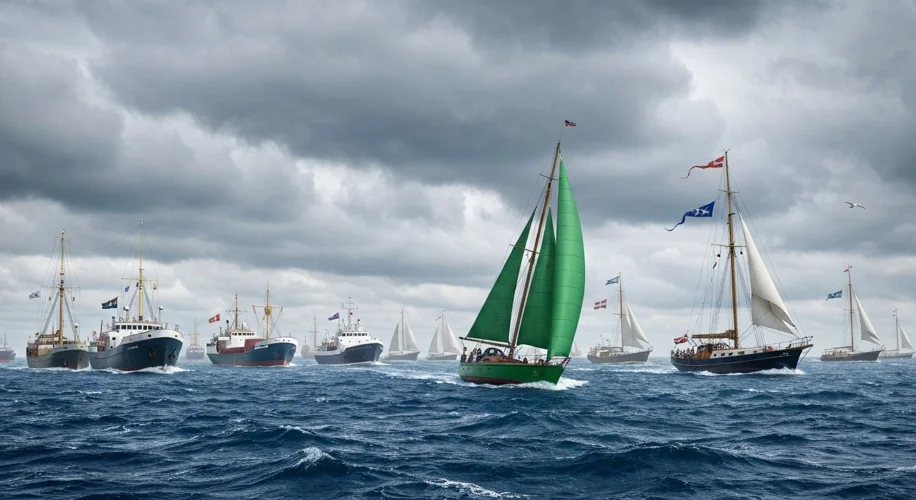History rarely repeats itself, but it often rhymes. As the world watches a modern aid flotilla, reportedly including activist Greta Thunberg, prepare to sail for Gaza, aiming to break what they describe as an “illegal siege,” echoes of past maritime defiance resonate across the centuries. This is not the first time ships have carried hope and controversy towards blockaded shores, nor is it the first time individuals have risked much to challenge perceived injustices at sea.
For ordinary folk, the image of ships pushing through a blockade to deliver essential supplies is a powerful one, evoking images of desperation, courage, and defiance. It’s a narrative as old as seafaring itself. Consider, for instance, the Hellenistic period in ancient Greece. Cities were often isolated, their survival dependent on sea lanes for food and trade. When a rival city-state imposed a blockade, it was a death sentence for many. Aid convoys, often clandestine or daring, would attempt to break these sieges, risking naval battles and the wrath of the besieging power.
One striking parallel, though centuries removed, can be seen in the Great Famine of Ireland in the mid-19th century. While not a military blockade in the strictest sense, the British government’s policies and the deeply unequal land distribution created a humanitarian crisis of epic proportions. Ships carrying grain and other foodstuffs were often exported from Ireland even as its people starved. While no organized flotilla sailed to break this imposed hunger, the sentiment of aid being thwarted by political will is a chilling precursor. Figures like Charles Trevelyan, the Assistant Secretary to the Treasury, famously believed that market forces and a lack of government intervention were the ‘correct’ way to handle the crisis, a perspective that led to immense suffering.
The early 20th century saw more organized attempts at breaking blockades, often with direct political aims. During the Balkan Wars, for instance, humanitarian efforts were made to break blockades and deliver aid to besieged populations. These were often small-scale but demonstrated a growing international awareness of humanitarian intervention.
However, the most direct and resonant historical precedent for a modern aid flotilla challenging a blockade occurred in the early 21st century, particularly concerning the Gaza Strip itself. In 2010, the Mavi Marmara, part of the larger “Gaza Freedom Flotilla,” attempted to deliver humanitarian aid to Gaza, which was then under a blockade imposed by Israel. The mission ended in tragedy when Israeli commandos boarded the ships, leading to the deaths of ten civilian activists. The event sparked international outrage and significantly heightened tensions. The flotilla’s organizers insisted on their peaceful intentions and the right to break the blockade, while Israel maintained the necessity of the blockade for security reasons. This incident remains a potent and painful reminder of the risks and complexities involved when civilian vessels challenge military blockades.

The current situation, with reports of a new flotilla preparing to sail, potentially with well-known activists like Greta Thunberg, taps into this historical lineage. The motivations are likely complex, blending humanitarian concern for the people of Gaza with a desire to protest and challenge the ongoing blockade. The participants often see themselves as heirs to a tradition of non-violent resistance and maritime solidarity. From their perspective, the blockade is a form of collective punishment, hindering essential supplies and economic activity, and they are using the sea as a stage to bring global attention to the issue.
On the other side, those enforcing the blockade will likely cite security concerns, arguing that uncontrolled entry could allow weapons or other dangerous materials to reach militant groups. This perspective emphasizes the state’s responsibility to protect its citizens and maintain order.
Each flotilla, whether ancient or modern, carries immense symbolic weight. They represent a direct challenge to established power structures and often highlight the deep divisions between humanitarian ideals and geopolitical realities. The success of such missions is often measured not just in the aid delivered, but in the awareness raised and the pressure exerted on international bodies and governments. The legacy of these maritime challenges is complex, often leading to increased scrutiny, diplomatic fallout, and, sometimes, a re-evaluation of the policies they aim to change.
As this new flotilla embarks on its journey, it’s crucial to remember the historical currents that have led to this moment. The sea has always been a pathway for trade, exploration, and, at times, defiance. The story of aid flotillas challenging blockades is a testament to the enduring human spirit’s drive to reach out, to protest, and to seek justice, even across the vast and often unforgiving expanse of the ocean.

